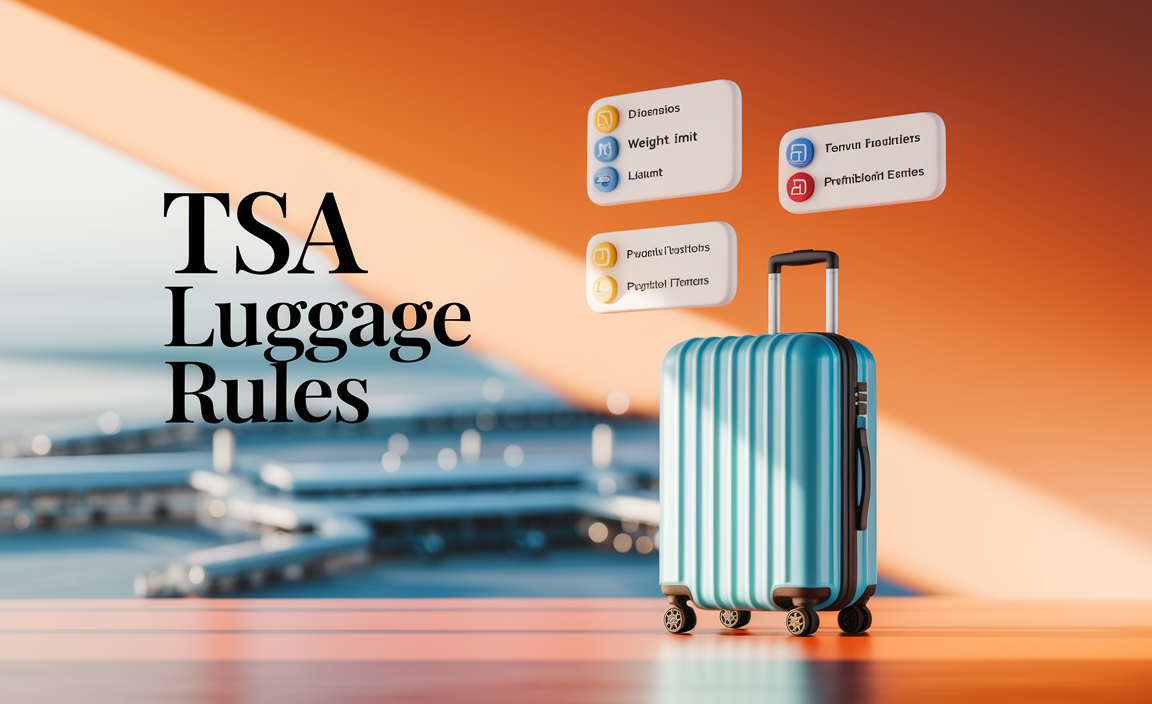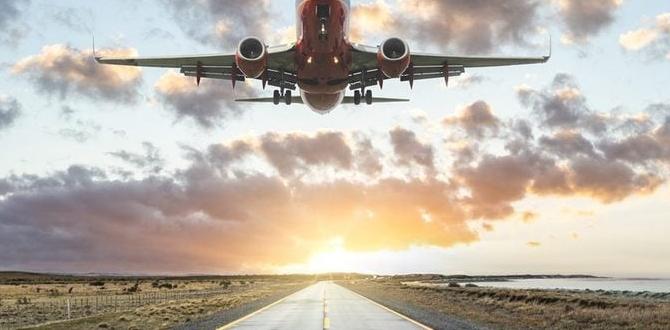Getting from Bangkok Airport to the city is straightforward! Choose the Airport Rail Link for speed and affordability, taxis for convenience, or Grab for a modern ride-hailing experience. This guide breaks down all your options so you arrive at your hotel stress-free.
Welcome to Bangkok! Stepping off the plane after a long journey can be exciting, but one of the first hurdles for many travelers is figuring out the best way to get from the airport to their accommodation. Bangkok, a city that pulsates with energy, has several excellent transport options connecting its international gateways to the vibrant city center.
It might seem a little daunting at first, with so many choices, but don’t worry! Journey Essentials is here to guide you through every step. We’ll help you choose the perfect ride based on your budget, luggage, and how quickly you want to start exploring. Let’s make your arrival as smooth and comfortable as possible, setting the stage for an amazing trip!
Understanding Bangkok’s Airports
Bangkok is served by two main international airports: Suvarnabhumi Airport (BKK) and Don Mueang International Airport (DMK). It’s crucial to know which airport your flight arrives at, as the transport options and their proximity to the city differ slightly.
Suvarnabhumi Airport (BKK)
This is the primary international gateway and the larger of the two airports. It handles the majority of long-haul flights and is known for its modern facilities. If you’re flying into BKK, you’ll have several convenient ways to reach the city.
Don Mueang International Airport (DMK)
Historically Bangkok’s main airport, DMK now primarily serves low-cost carriers and domestic flights, though some international routes still operate from here. It’s located closer to the city center than BKK, which can sometimes make for a quicker transfer.
Airport Rail Link: The Speedy Subway
For many travelers, especially those heading to the Sukhumvit or Silom areas, the Airport Rail Link (ARL) is the undisputed champion for commuting from Suvarnabhumi Airport (BKK) to the city. It’s fast, efficient, and significantly cheaper than a taxi, making it a favorite for seasoned travelers and budget-conscious explorers alike.
How It Works
The Airport Rail Link is a direct train service that runs from the basement level of Suvarnabhumi Airport. It connects directly to the city’s Mass Rapid Transit (MRT) and BTS Skytrain systems, offering seamless onward travel.
Stations and Connections
- Phaya Thai Station: This is the end of the line for the express service and directly connects to the BTS Skytrain. From here, you can easily reach popular tourist areas like Siam, Chit Lom, and Asok.
- Makkasan Station (also known as Phetchaburi MRT station): This station provides a convenient interchange with the MRT Phetchaburi station, which can take you to areas like Sukhumvit, Silom (via transfer), and many other parts of the city.
Ticket Information
Ticket machines are available, but for the quickest experience, you can purchase a stored-value smart card from the ticket office. These cards can be topped up and used on both the ARL and the BTS/MRT systems. The fare is distance-based and very affordable, typically ranging from 15 to 45 Thai Baht (THB) depending on your destination.
Operating Hours
The Airport Rail Link usually operates from 6:00 AM to 12:00 AM (midnight). It’s essential to check the latest schedule, especially if you arrive very late or depart early.
Pros and Cons of ARL
| Pros | Cons |
|---|---|
| Fast and efficient, often avoiding traffic jams. | Can get crowded during peak hours. |
| Affordable fares. | Requires a transfer to BTS/MRT for final destination, which can be challenging with heavy luggage or young children. |
| Direct connection to BTS and MRT networks. | Limited operating hours (not 24/7). |
| Environmentally friendly option. | The walk from the train platforms to the ticket gates and onward connections can feel long with much to carry. |
Taxi Services: Door-to-Door Convenience
Taxis are a ubiquitous and popular choice for getting around Bangkok, offering direct transport from the airport to your hotel. They are especially appealing after a long flight when all you want is to get to your room with minimal fuss.
Finding Official Taxis
At both Suvarnabhumi (BKK) and Don Mueang (DMK) airports, you’ll find designated taxi stands. Follow the signs for “Public Taxis” or “Airport Taxis.” It’s crucial to use these official queues to ensure you get a legitimate service. Avoid anyone offering unsolicited rides inside the arrivals hall.
How Metered Taxis Work
Bangkok taxis are metered. The driver must use the meter. Upon reaching your destination, the meter fare will be displayed. In addition to the meter fare, you will need to pay two surcharges:
- Airport Surcharge: A fixed fee of 50 THB for taxis departing from BKK or DMK airports.
- Toll Fees: You will pay for any expressways or toll roads used, which can vary depending on the route.
The total fare typically ranges from 300-500 THB depending on traffic and your exact destination.
Tips for Taking a Taxi
- Insist on the meter: If the driver tries to negotiate a fixed price, politely decline and reiterate “meter, please.”
- Have your destination written down: In Thai, if possible. Many hotels have cards with their address in Thai. This avoids language barriers.
- Keep small change handy: For toll fees and the final fare.
- Be aware of non-metered tourist scams: Stick to the official queues. Legitimate taxi drivers are proud of their metered fares.
Pros and Cons of Taxis
| Pros | Cons |
|---|---|
| Convenient door-to-door service. | Can be significantly more expensive than public transport. |
| Ideal for heavy luggage or traveling in small groups. | Subject to Bangkok’s notorious traffic, potentially leading to long travel times. |
| Readily available at both airports. | Potential for language barrier issues or encountering drivers who try to avoid the meter (though rare with official airport taxis). |
| Comfortable and private. | Toll fees add to the final cost. |
Ride-Hailing Apps: Grab Your Modern Solution
In Southeast Asia, Grab is the dominant ride-hailing app, akin to Uber in other parts of the world. It offers a convenient and often transparent way to book a ride from either airport.
How Grab Works From the Airport
- Download the App: Ensure you have the Grab app installed and set up with your payment details before you arrive in Thailand.
- Connect to Wi-Fi or Get a Local SIM: You’ll need an internet connection to book a ride. Many airports offer free Wi-Fi. Alternatively, purchasing a local SIM card at the airport is a cost-effective way to stay connected throughout your trip. Learn more about staying connected with Thailand SIM card guides.
- Book Your Ride: Open the app, enter your destination, and select the Grab service you prefer (e.g., JustGrab for closest car, GrabCar for a standard car, GrabFamily for child seats if needed). The app will show you estimated fares and waiting times.
- Meet Your Driver: The app will guide you to a designated Grab pick-up point at the airport. These are clearly marked.
Grab vs. Taxi
Grab often provides upfront, fixed pricing, which can be an advantage over taxis where tolls and traffic can make the final fare uncertain. It also allows you to rate your driver and provides a record of your journey. For travelers with children, Grab Family can be invaluable as it offers car seats, providing peace of mind and compliance with regulations. When traveling with your little ones, ensuring their safety and comfort, especially with needs like travel car seats, is paramount. If you are an adult needing discreet adult diapers for travel, having them readily available and knowing your transport is reliable can significantly reduce stress on long journeys.
Pros and Cons of Grab
| Pros | Cons |
|---|---|
| Transparent, upfront pricing. | Requires internet connectivity. |
| Convenient booking through an app. | Pick-up points might require a short walk. |
| Option for child seats (GrabFamily). | Can sometimes be slightly more expensive than a metered taxi, depending on demand. |
| Driver and vehicle details are provided for safety. | Popular during peak times, so wait times can occur. |
| English-speaking drivers are common. | Users need to be comfortable with using smartphone apps. |
Bus Services: The Budget-Friendly Option
For the most budget-conscious travelers, public buses offer a very economical way to reach various parts of Bangkok from the airports, though it’s often the most complex option for newcomers.
From Suvarnabhumi (BKK)
BMTA (Bangkok Mass Transit Authority) city buses operate from the Public Transportation Centre, which is a short shuttle bus ride from the Arrival Hall. Several bus routes connect BKK to different parts of the city, including bus terminals and major intersections.
- Route 550 goes to Happy Land.
- Route 552 goes to On Nut BTS Station.
- Other routes connect to major bus terminals like Mo Chit and Ekkamai.
Fares are extremely low, often just 20-30 THB. However, these buses can be slow, make many stops, and understanding routes can be challenging without local knowledge or a good navigation app.
From Don Mueang (DMK)
DMK is also served by BMTA buses. Many local lines pass through or originate from DMK, offering connections to areas further north of the city center and also to major transit hubs.
- Route A1 is a popular express service linking DMK to the BTS Skytrain Mo Chit station and the MRT subway Chatuchak Park station. This is a fantastic option if you’re looking for a cheap way to get into the city and connect to public transport.
Considerations for Bus Travel
Bus travel in Bangkok is an adventure! It’s a great way to experience local life, but be prepared for:
- Crowds: Buses can be very full.
- Heat: Not all buses are air-conditioned.
- Navigational Challenges: Routes can be winding, and announcements may be in Thai.
If you’re traveling light, have a good grasp of Thai geography, or are looking for the absolute cheapest way, buses are an option. For most first-time visitors, especially those with luggage or who prioritize comfort, the Airport Rail Link or taxis/Grab are usually more practical choices.
Pros and Cons of Buses
| Pros | Cons |
|---|---|
| Extremely affordable. | Slow and time-consuming due to many stops. |
| Offers a glimpse into local life for adventurous travelers. | Can be crowded and uncomfortable, especially non-air-conditioned buses. |
| Extensive network coverage. | Navigational difficulties for non-Thai speakers. |
| Good connectivity from DMK (e.g., A1 bus). | Requires transfers to reach most tourist destinations, similar to ARL but with potentially longer waits. |
Transport From Don Mueang (DMK): Specifics
Don Mueang Airport (DMK) is often the choice for budget airlines, and its location offers slightly different advantages for transfers.
Taxi and Grab at DMK
Similar to BKK, DMK has official taxi queues and designated Grab pick-up points. Taxis might be slightly cheaper due to DMK’s closer proximity to some parts of the city, but traffic remains a factor. Grab is also a reliable option with clear signage for pick-up zones. The Airport Surcharge still applies for taxis.
The Airport Rail Link Connection from DMK? Not Directly
Unlike BKK, Don Mueang Airport does not have a direct Airport Rail Link. However, you can easily connect to Bangkok’s rail networks:
- Bus A1 to BTS Mo Chit / MRT Chatuchak Park: This is a very popular and efficient choice. For around 30 THB, the A1 bus takes you directly to Mo Chit BTS station and Chatuchak Park MRT station. From there, you can easily transfer to the BTS Skytrain or MRT subway to reach your final destination. This is often quicker and easier than navigating local buses to connect.
- Train to Hua Lamphong: There’s a train station within walking distance of DMK (Don Mueang Railway Station). It connects to Hua Lamphong Station in central Bangkok, which is the main railway hub. This is a more traditional, slower option but can be an interesting experience. Services are less frequent and primarily serve commuters.
Pros and Cons of DMK Transport Options
The key advantage of DMK is its connectivity via the A1 bus to the BTS/MRT, offering a great balance of cost and speed. Taxis and Grab are also readily available, with potentially slightly lower baseline fares than from BKK, though traffic can negate this advantage.
Planning for Comfort and Ease
Regardless of the transport option you choose, a little preparation goes a long way to ensure a comfortable journey, especially if you have specific needs.
Luggage and Children
Traveling with heavy suitcases or multiple bags can make navigating public transport tricky. If you plan to use the Airport Rail Link or buses, factor in the effort of moving your luggage through stations and on/off vehicles. Taxis and Grab are far more convenient if you have a lot of baggage. For families, traveling with young children adds another layer of planning. Ensuring you have essential items like travel-friendly child diapers, snacks, and entertainment ready can make the journey smoother. If you need child-specific car seats, GrabFamily is a standout option.






